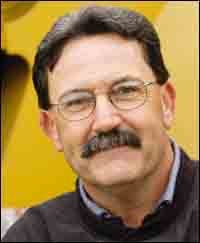Headquarters: Macon, Ga.
Specialty: Aggregate production
Equipment Value: $25 million
Fleet Makeup: 65 units; including eight loaders, eight haul trucks, and 49 support pieces
Equipment-Support Staff: Four Rinker Materials technicians, four contract technicians, and three administrative personnel
Market Range: Georgia, Florida
Operations managers at the Rinker Materials granite quarry in Macon, Ga., were pretty sure they had an availability problem. In 2000, they hired Dave Venrick and challenged him to identify the source and the solutions.
"Everybody was pointing fingers toward availability," says Venrick, mobile equipment manager. "But nobody had the data they needed to tell how big the problem was or what was causing it."
The Macon quarry had an aging fleet that was still reasonably reliable, but nickel-and-dime repairs were eating away at productivity. Without detailed repair histories on each machine, there was no way to identify maintenance priorities or machines needing to be retired.
"Rinker Materials looks at capital expenditures in terms of return on funds employed," Venrick says. "It was very difficult to justify buying new machines because we didn't have a lot of the information that we needed to decide which ones to replace."
The company's management software, called SAP, had all the tools they needed to get the information. They just weren't being used to manage equipment.
"Like a lot of companies, Rinker Materials had implemented the system and instructed their people on how to use the most important pieces," Venrick says. "After that, there wasn't a whole lot of follow-up to implement the rest of the system.
"The beauty of SAP is that it doesn't matter if you're making widgets or if you have a quarry, it'll manage every bit of any operation. Everything is in there from basic planning and scheduling to totally full-blown cost tracking, cost-management plans, equipment lifecycle projections, everyday profit-and-loss and operating statements."
Venrick went to work immediately on setting up the entire mobile-equipment preventive-maintenance program on the SAP scheduler. Twice a week, machine hour-meter readings are keyed in as critical raw material.
"Operating hours are used all through the system—to track component hours, wear-item hours, oil hours and major repairs," Venrick says. "The most important information is operating hours."
All inputs—fuel, lube, labor, parts—are recorded for each machine. Unit histories keep track of warranties and flag mechanics when a broken component is still covered. But deciding how much data was necessary, and then gathering it accurately without overloading the equipment staff was a major concern.
"We started making a list of data we could input accurately and continually," Venrick explains. "At some point we need to be able to pull it back out of the software and figure out what the data is telling us."
Venrick's list of most important information is reasonable: preventive-maintenance cost, tire cost, component cost, cost of wear parts (ground-engaging tools), fuel usage, downtime (or availability), damages, and hours worked.
The Macon operation puts 5,800 hours per year on eight 50-ton haul trucks. In little more than 18 months, the system had recorded enough machine experience to identify some sources of downtime.
"Once we got a handle on what it was costing us every day to run each piece of equipment, our angle of attack was to say, 'If we do this now, what costs are we going to avoid in the future? If we rebuild this engine now for $25,000 and avoid the after-failure cost of $60,000, what's that going to do to this machine's cost in the long run?'"
Venrick developed a three-year plan for Macon, projecting all major expenditures necessary to ensure 95 percent uptime. The data didn't bring any startling revelations, but it did help identify when to do the right things.
"When you see a sharp increase in repair costs, you've gone past a machine's useful life," Venrick says. "We need to know when that time is coming and take the machine down to do some rebuilds before it ruins production. We predict what's coming by watching not only repair costs, but productivity and availability of the machine.
"Most haul trucks can go to 15,000 hours here. Cat recommends that a haul-truck engine will last 12,000 hours, so we watch oil samples very closely after 12,000 hours. We monitor when services are being done, oil consumption, consumption of coolant. That information will let us know if we can go to 15,000 hours, or if we need to bring the machine down at 13,000 or 14,000."
Information is reshaping the fleet. In 2000, the Macon quarry was running ten 50-ton haul trucks. Since then, they've purchased three 70-ton trucks, and now eight trucks work the 10-percent grades of the 500-foot-deep pit.
"We were able to take an older truck, strip it, and rebuild all the components," Venrick says. "Over three years, we've used them as replacement components throughout the fleet and changed out all the components that had high hours on them.
"We're moving from reactive to proactive repairs, and we're doing the same thing at Rinker Materials' Dogwood, Georgia, quarry, too."
Venrick recently took responsibility for Rinker Materials' mobile equipment throughout Georgia. He is creating a five-year projection of capital investment for the region.
Data recorded and reported by SAP has also been crucial to convincing the corporation to invest in maintenance technologies. Ideas that have spread from Macon to other Georgia quarries include auto-lube systems, an automated fuel-tracking system, and Cat's Product Link on-board data system. An in-depth operator-training program is being exported to the region.
Production at Macon has continued to climb—an increase of about 8 percent since 2000—while overall cost per ton has plummeted. In 2000, operating costs topped $1 per ton (ownership and repair costs, not including operator's wages and fuel). By 2003, cost per ton had fallen to 74 cents.





